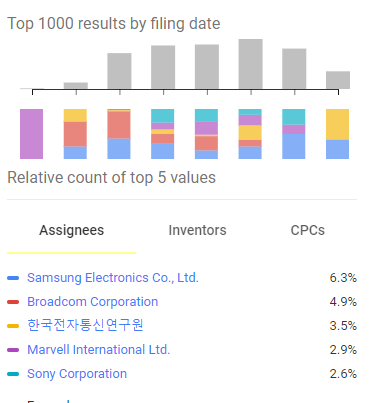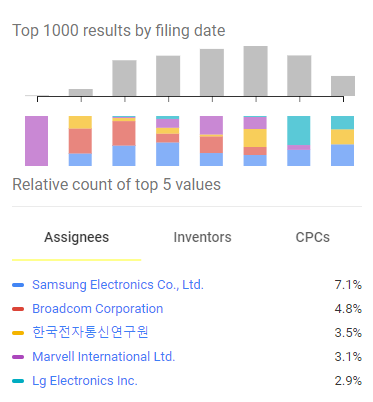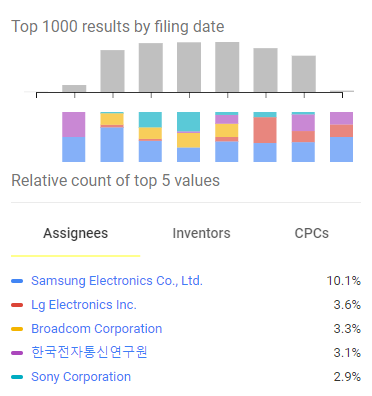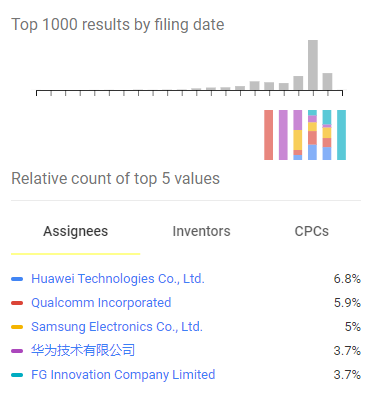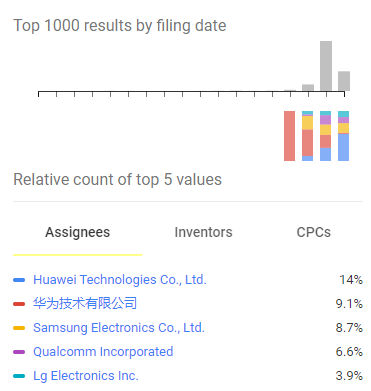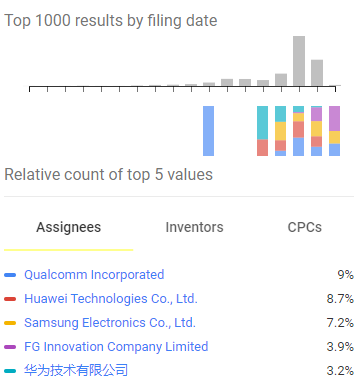There’s nothing more fascinating than uncovering the development of certain technologies and how these came to be in today’s form. Cellular standards are no stranger to politics, lobbying, intense competition, patent disputes, and many other commercial rivalries. The choice of technologies in The 3rd Generation Partnership Project (3GPP) is one of these contested domains, where companies compete to promote their own technology choices, giving them a significant competitive advantage when they have a strong patent portfolio in the area. Channel coding is one of those areas, where interesting developments took place with 5G.
Channel Coding Theory and 5G
Information theory studies the quantification, storage, and transmission of information. In telecoms systems, and mobile networks, more importantly, information theory describes how the information is translated into bits that can be transmitted over the radio and other communication channels. The most important, and ever-changing, aspect of information theory is channel coding, where additional information is added to the transmitted message so that potential errors can be corrected when the signal is received. These errors are, in fact, certain in any communication channel, let alone the unpredictable radio environment, while different channel coding techniques compete on processing performance, the amount of extra information needed to adequately correct transmitted information errors, and, finally, maximum potential channel capacity.
As expected, channel coding is a field where there is constant innovation according to communication demands. For example, the Global System for Mobile Communications (GSM) used block codes, while subsequent networks, including Universal Mobile Telecommunications Service (UMTS), High Speed Packet Access (HSPA), and Long Term Evolution (LTE) used turbo codes. GSM focused on voice communications where congestion could be reached through a higher number of calls or end users, while as the industry progressed from UMTS to LTE-Advanced Pro, capacity was limited due to the traffic itself; a single user would be able to congest a single cell by consuming high-quality video. In 5G, the mode of communication requires a flexible, high-bandwidth and low-latency coding scheme, and 3GPP has decided to use new schemes in Release 15, namely polar coding and Low Density Parity Check (LDPC) codes.
Polar and LDPC Codes
The coding schemes for 5G New Radio (NR) are defined in 3GPP TS 38.212 and the following table illustrates a simplified version of the coding scheme mix in the new standard.
| Transport channels |
Coding scheme |
| Uplink shared channels |
LDPC |
| Downlink shared channels |
|
| Paging channel |
|
| Broadcast channel |
Polar code |
| Control channels |
Coding scheme |
| Downlink control info |
Polar code |
| Uplink control info |
Block code |
| Polar code |
Turbo codes had been used extensively in UMTS (3G) and LTE (4G), but the decision to move to new coding schemes is both a sign of changing end-user and application requirements, as well as the availability of processing capabilities at the baseband. At this point, it is interesting to recount how both these information technologies came to life.
The History of Polar and LDPC Codes
Polar codes were the brainchild of Professor Erdal Arikan at Bilkent University in Ankara, Turkey. Professor Erdal Arikan completed his information theory Ph.D. at the Massachusetts Institute of Technology (MIT) in 1987, under the supervision of Professor Robert Gallagher. Professor Arikan then presented the theory of polar codes in 2009, after which the new coding scheme was considered, and accepted for the control channel of 5G NR. Polar codes—in the grander scheme of information theory—are quite a new development, because most coding schemes were discovered many years ago.
This is also the case of LDPC codes, which was the Ph.D. thesis of the very same Professor Robert Gallagher at MIT in 1963. At the time, the new coding scheme was a revolution but was forgotten until 1996, when processing capabilities had improved drastically. Since then, LDPC has been used widely in many applications, including Wi-Fi 802.11ac, Ethernet, Digital Video Broadcasting (DVB), and many others. They are considered a high-performance coding scheme and illustrate a better performance compared with turbo codes, especially in very large block lengths and higher code rates.
Given that both polar codes and LDPC codes are new schemes in the telecoms domain, the question is why did 3GPP choose these for control and data channels?
Polar Codes Need More Time
Polar coding is a 10-year-old technology, while LDPC is more than 50 years old and widely used across many industries and technologies. 3GPP chose the “textbook” version of both codes and adapted them for NR during the 9-month period of meetings, offline work, and extensive Research and Development (R&D) by 3GPP Radio Access Network (RAN) workgroups. The benefits of LDPC have been known for decades: it presents a more scholastic, less optimized scheme for high-bandwidth applications, and in large block sizes, the scheme is the best performing option when accounting for error-correcting capabilities, throughput and processing requirements.
Polar codes have excellent error-correcting properties, especially at large block lengths. At moderate block lengths, LDPC performs better. However, polar codes require an option called successive cancellation that itself requires bit-by-bit decoding, which translates to heavy processing requirements, especially if the block length is large. Therefore, it is a compromise given current processing capabilities: polar codes illustrate either excellent error correcting functionality or high throughput. These will be combined in due time, but there is additional work required to optimize it and perhaps take advantage of new, more powerful processors that will render the use of polar codes for high bandwidths more approachable.
The discussion above relates mostly to the transport channel, where high bandwidths are necessary. In the control channel, polar codes illustrate a very good performance, where they can be tuned in a very fine-grained manner (changing frozen bits) and their lengths can vary very easily.
Who Holds Patents for Polar and LDPC Codes?
LDPC codes are 50 years old and basic patents for the coding scheme have expired. On the other hand, patents for polar codes are in effect, because the technology is much newer. A simple Google Patents search illustrates this effect.
Table 1: LDPC Patent Analytics—Google Patent Search
| All patents |
Granted patents |
Patent applications |
|
|
|
|
The distribution of granted patents, patent applications, and all patents profiled by Google Patents is led—but not dominated—by Samsung and other companies, including Broadcom, Huawei, and Marvell. It should be noted that these results are indicative and not definite, especially when considering patent essentiality in 3GPP. However, these results give us a broad indication that LDPC code patents are evenly distributed throughout the supply chain and that no company is dominant. This is not the case with polar codes.
Table 2: Polar Code Analytics—Google Patent Search
| All patents |
Granted patents |
Patent applications |
|
|
|
|
These results are again indicative, but the clear dominance of Huawei in granted patents (holds ~23.1%; both first and second companies listed in granted patents are Huawei) signifies the investment of the Chinese vendor in the new coding scheme. A striking conclusion is also the absence of large Western infrastructure vendors from these patent searches and that Qualcomm is now holding the lion’s share of patent applications, although not a leader in granted patents.
As expected, Huawei has been pushing for the approval of polar codes in 3GPP, but other companies would naturally steer the coding scheme choice away from polar codes, because this would mean more royalties for Huawei and fewer for other companies. ABI Research is oversimplifying our discussion in this document, but, in reality, the choice of coding scheme in 3GPP has been a mix of political, technical, commercial, and even personal discussions. Many other technical areas are subject to similar discussions in an ever-lasting competition for essential patents and royalties.
Conclusion
LDPC and polar codes have been extensively studied for years, but have been commercially deployed only recently, notably with the rollouts of 5G NR networks. Naturally, many companies hold patents and Intellectual Property Rights (IPR) for both coding schemes, but their choice was the rigorous discussion and R&D in 3GPP and member organizations. Moreover, both LDPC and polar codes have been chosen for NR and will not likely change in the foreseeable future, not unless a new generation starts to be discussed and either polar or LDPC codes are found to be inefficient. This is not likely in the foreseeable future. There is additional work to be done in optimizing both coding schemes, and, in particular, polar coding, but these improvements will not likely be introduced in the 5G standard because they will require support in the existing devices in the market. Nevertheless, both coding schemes will be vital for multi-Gigabits per Second (Gbps) connections and necessary to help materialize Terahertz (THz) communications that are currently being discussed. There are already trials for P802.15 and examples of Terabits per Second (Tbps) links using THz communications using LDPC codes, and both coding schemes will likely be the foundations for next cellular generations.


